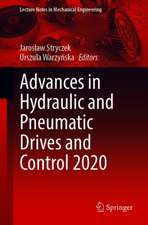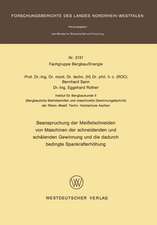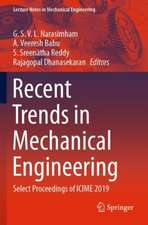Applied Thermodynamics for Engineering Technologists
Autor T. D. Eastop A. McConkeyen Limba Engleză Paperback – 29 feb 1996
"Applied Thermodynamics for Engineering Technologists" provides a complete introduction to the principles of thermodynamics for degree level students on courses in mechanical, aeronautical, chemical, environmental and energy engineering and engineering science courses.
The fifth edition of this classic text for applied courses has been completely revised and updated to take account of modern teaching methods and perspectives, with the emphasis placed on the application of theory to real processes and plant.
New for this edition is a section on energy recovery, including pinch technology and a discussion of the thinning of the ozone layer due to the use of CFCs. Examples and problems using the refrigerant 134A replace the previous references to CFC R12.
In addition, the discussion of energy sources, their uses and management, has been expanded and improved and there is now extensive coverage of the combined heat and power section. The material on turbines, compressors, nozzles and propulsion is presented in a more logical sequence but retains important information on the differences between gas and steam turbines. Finally the section on refrigeration gives more prominence to the heat pump and vapour absorption plant.
Preț: 579.75 lei
Preț vechi: 666.37 lei
-13% Nou
110.97€ • 120.58$ • 93.28£
Carte disponibilă
Livrare economică 31 martie-14 aprilie
Livrare express 14-20 martie pentru 58.10 lei
Specificații
ISBN-10: 0582091934
Pagini: 736
Dimensiuni: 189 x 246 x 40 mm
Greutate: 1.3 kg
Ediția:Nouă
Editura: Pearson
Locul publicării:Harlow, United Kingdom
Descriere
The fifth edition of this classic text for applied courses has been completely revised and updated to take account of modern teaching methods and perspectives, with the emphasis placed on the application of theory to real processes and plant.
New for this edition is a section on energy recovery, including pinch technology and a discussion of the thinning of the ozone layer due to the use of CFCs. Examples and problems using the refrigerant 134A replace the previous references to CFC R12.
In addition, the discussion of energy sources, their uses and management, has been expanded and improved and there is now extensive coverage of the combined heat and power section. The material on turbines, compressors, nozzles and propulsion is presented in a more logical sequence but retains important information on the differences between gas and steam turbines. Finally the section on refrigeration gives more prominence to the heat pump and vapour absorption plant.
Cuprins
2. The Working Fluid.
3. Reversible And Irreversible Processes.
4. The Second Law.
5. The Heat Engine Cycle.
6. Mixtures.
7. Combustion.
8. Steam Cycles.
9. Gas Turbine Cycles.
10. Nozzles And Jet Propulsion.
11. Rotodynamic Machinery.
12. Positive Displacement Machines.
13. Reciprocating Internal-Combustion Engines.
14. Refrigeration And Heat Pumps.
15. Psychometry And Air-Conditioning.
16. Heat Transfer.
17. The Sources, Use And Management Of Energy.
Caracteristici
- Presents a wide breadth of subject coverage.
- Practical, applications-based approach, with over 150 worked examples and over 200 end-of-chapter problem questions.
- Completely revised to take account of modern teaching methods.
- Expanded topics on energy sources, combined heat and power, and refrigeration and new topics include energy recovery and destruction of the ozone layer.
- Solutions manual available for adopters of this text.
- Written entirely in SI (metric) units.
Textul de pe ultima copertă
"Applied Thermodynamics for Engineering Technologists" provides a complete introduction to the principles of thermodynamics for degree level students on courses in mechanical, aeronautical, chemical, environmental and energy engineering and engineering science courses.
The fifth edition of this classic text for applied courses has been completely revised and updated to take account of modern teaching methods and perspectives, with the emphasis placed on the application of theory to real processes and plant.
New for this edition is a section on energy recovery, including pinch technology and a discussion of the thinning of the ozone layer due to the use of CFCs. Examples and problems using the refrigerant 134A replace the previous references to CFC R12.
In addition, the discussion of energy sources, their uses and management, has been expanded and improved and there is now extensive coverage of the combined heat and power section. The material on turbines, compressors, nozzles and propulsion is presented in a more logical sequence but retains important information on the differences between gas and steam turbines. Finally the section on refrigeration gives more prominence to the heat pump and vapour absorption plant.



























